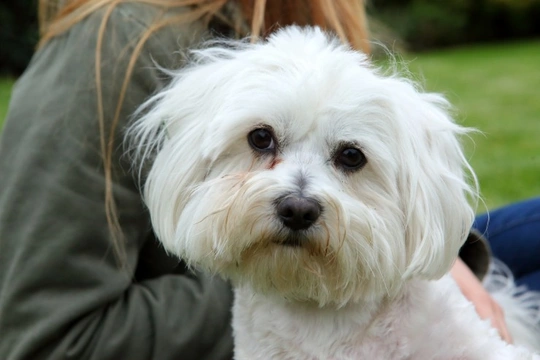
Different approaches to tackling tear stains in dogs
Tear staining is largely an issue that affects small and toy dog breeds, particularly often those with white fur. However, larger breeds can also become prone to tear staining too if the shape and structure of their face and eyes cause a tendency to it, and if their fur is of a type and colour that is apt to show them up.
It is not always easy to prevent or stop tear staining from occurring, because a whole range of different things can cause the problem or cause dogs to have a predisposition to it, but understanding some of the main causes and most appropriate ways of tackling them can help.
In this article, we will look at some of the various different approaches that you can try to tackle tear staining in your own dog, and examine which of them are the most effective. Read on to learn more.
What is tear staining?
Tear staining in dogs occurs when a combination of factors lead to an excess production of tears from the lacrimal glands or tear ducts, which then drain from the inner corners of the eyes onto the fur. This occurs due to a variety of factors in combination, usually including one or more of the following:
- Overactive tear ducts.
- Irritation of the eyes.
- Narrow eyes.
- Eyes slanted towards the inner corner.
- Deep set corners of the eyes, which cause fluid to collect.
- The structure of the muzzle leading to tears pooling in the fur.
- A blockage of the eye’s drainage channels.
- Narrow tear ducts.
- White or light-coloured fur showing up staining much more clearly than darker colours.
- An eye infection.
- Allergies.
Over time, the fur below the inside corners of the eyes will begin to discolour and darken, due to being wet or damp almost constantly, or being unable to drain the tears.
Can you reverse or prevent tear staining?
Depending on the reason why your dog is prone to tear staining, it may be possible to treat and correct the problem entirely, although this is not possible in all cases.
If the problem is caused by an infection or allergy, treating this and so, cutting down on the excess tear production will usually sort it out.
If the conformation of your dog’s eyes is such that their eyes are unable to drain fluid properly, there are surgical options available to correct this.
If the drainage channels of the eyes are blocked or are prone to blocking, surgery can sometimes be indicated in this instance too. However, if your dog’s basic conformation, eye structure or shape cause the problem, this is usually something that has to be managed rather than something that can be corrected.
Options for tackling tear staining
First of all, you should talk to your vet about your dog’s tear staining, and get them to check your dog out to make sure that there is not an infection or allergy present that is causing the problem or making it worse.
If the problem is caused by something that can be addressed, your vet will talk you through some of the options for doing this, or at least they should be able to give you a good idea of why your dog is prone to tear staining, even if they do not think that it can be corrected.
If your vet simply tells you that the tear staining is an irritation or inconvenience rather than a problem or something that can be corrected, they will also then potentially make suggestions for how to go about this.
Some of the most popular and effective methods of removing and tackling tear staining in dogs are outlined below.
Flushing the tear ducts
Asking your vet to flush your dog’s tear ducts can often help to correct or reduce the problem, although this is not always a perfect or long-term solution, and so may need to be repeated in the future.
Flushing the tear ducts out serves several purposes, including freeing and rinsing out bacteria, dirt and other irritants that may be causing the staining or making it worse, as well as potentially helping to widen narrow tear ducts and make drainage easier, and reduce overproduction.
Dietary changes
In some cases, a high mineral content in the dog’s diet or drinking water can make them more prone to developing tear staining, and so making changes to how you feed and provide water to your dog can help.
Try feeding a food designed for sensitivities, which will not contain the colourings and preservatives that often up the mineral content of food, and filter your dog’s water in order to reduce the mineral content of their drinking water too.
Cleaning
In order to improve the cosmetic appearance of your dog’s eyes and reduce the visible effect of tear staining, cleaning the eyes and muzzle on a daily basis can help. Tear staining and discolouration builds up over time until the fur becomes discoloured, and so preventing the build-up from occurring can lessen the physical effects of tear staining.
Thoroughly moisten the dried, discoloured areas of fur to break up goo, matted fur and tear stains, and repeat this once or twice a day until you begin to see an improvement. There are also various different brands of eye wipes designed especially to deal with this problem in dogs, which can make it easier too.



